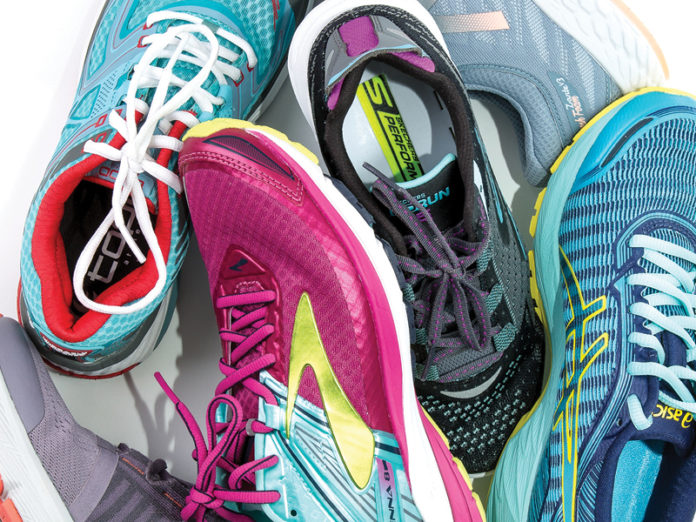
Every runner loves new running shoes and sometimes a coach, therapist, training partner or retailer will recommend you try different shoes. But it’s easy to get confused by what’s on the market and when you consider that radical changes in running footwear can lead to injury, the choices become more difficult.
Our research team at Laval University in Quebec set out to create a scale to assist runners in selecting appropriate running shoes and to guide their transition between different models, reducing injury and improving performance. With the help of 42 experts from 11 countries, we defined minimalist shoes as: “Footwear providing minimal interference with the natural movement of the foot due to its high flexibility, low heel to toe drop, weight and stack height, and the absence of motion control and stability devices.”
Then we created the Minimalist Index, a rating scale based on the factors above to help you find new shoes that can be integrated wisely into your training program. The index was designed to provide a percentage of minimalism for every running shoe. The more minimalist, the higher the score.
On our scale, the Vibram Five Fingers KSO gets a 100% score, while ASICS Cumulus gets an 8% score. In between, Minimalist Index scores are 82% for New Balance RC 5000, 56% for Nike Free Flyknit 4.0 and 48% for Saucony Kinvara. You can index your own shoes at TheRunningClinic.com.
Higher scoring shoes on the Minimalist Index will decrease mechanical load on your knees, hips and lower back, while they increase load on your foot, calf and Achilles tendon. On the opposite end, lower scoring shoes decrease the load on your foot, calf and Achilles tendon, but increase the load on your knees, hips and lower back. Basically, too quick of a transition to higher scoring shoes could lead to foot, calf or Achilles tendon pain. And making a fast shift to lower scoring shoes could cause knee, hip or low back pain.
Therefore, to ensure that no injuries result from changing your footwear, runners should aim for one month of transition for every 10-20% change on the Minimalist Index. You should integrate your new shoes at a maximum rate of one to two minutes per training session and let your body adapt to the change very slowly. For example, if you run 30 minutes three times a week, you should wear your new shoes for only the first minute of your first run, then put on your old runners to finish out the session. Your second training run will be new shoes for 2-3 minutes, then the third run will be new shoes for 3-4 minutes.
Don’t hesitate to slow down the transition in the presence of pain or soreness. The key is: watch the Minimalist Index and listen to your body!
Look for the Minimalist Index rating (M.I.) for each shoe in IMPACT’s 2017 Road Shoe Review.
















